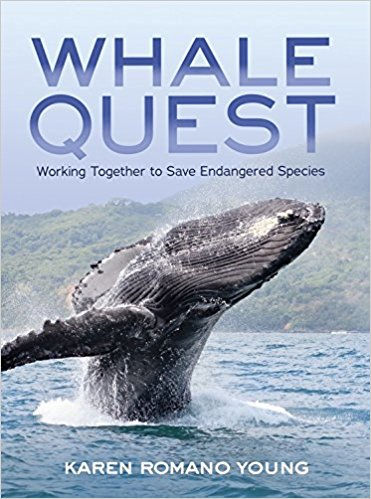writer • artist • science communicator •comics creator
My next book,
GALÁPAGOS ISLANDS: THE WORLD'S LIVING LABORATORY
just got a starred review from
School Library Journal!
With illustrations by Amy Grimes and published by What On Earth!

Watch the Galápagos trailer!

August, 2017
a Junior Library Guild selection

Whale Quest:
Working Together to Save Endangered Species
Who's looking for -- and looking out for -- whales?
The future of this endangered species relies on the concern of people who are passionate about whales, from kids on whale watch boats to on the scientists who study whales to determine what they need.
Stories about individual whales and the people who observe them abound in this upcoming book from Twenty-First Century Nonfiction.
a Junior Library Guild selection
Green Earth Book Award shortlist
Bank Street Center for Children's Literature Best Books of the Year
VOYA Nonfiction Honor List, 2018
Represented the great state of Connecticut at the National
Book Festival. Read about it here.
New York City Public Schools
Book of the Week, June 2024
Nonfiction ages 12-18
-
ISBN-10: 1467792462
-
ISBN-13: 978-1467792462
A succinct and valuable introduction to whales, Young’s book belongs in public and homeschooling libraries, marine museums, and middle school collections, as well as the shelves of hobbyists and students of marine biology. -- VOYA Magazine
"Threats to whale populations are abundant, but there are many human allies working together around the world to protect their fragile populations. Young explores how cetologists, researchers, and citizen scientists work individually and cooperatively to protect whales from such hazards as climate change, commercial fishing and shipping, water and noise pollution, and unregulated whale-watching tourism. Before going into specifics about conservation efforts, Young explains the evolution and nature of cetaceans, how the whaling industry brought many species to the brink of extinction, and early conservation efforts that resulted in the establishment of the International Whaling Commission. She also notes how popular films such as Free Willy and Whale Rider and award-winning documentaries like Blackfish and Dolphin Cove have helped spread appreciation for cetaceans and raised public consciousness about conservation issues. One chapter explores the controversy of whale captivity, with Sea World at the center of a widespread public backlash against the practice. For those with a taste for the icky and gross, Young explores how much researchers can learn from whale feces and snot. A closing guide to whale species offers a sobering reminder of the terrible toll taken on whales by humans. The blue whale population, for example, is estimated now at 5,000, down from a pre-hunting population of 200,000. An informative, well-researched, and engagingly written look at global efforts to protect Earth's largest mammals. (maps, photos, source notes, glossary, bibliography, further reading)" -- Kirkus Reviews, June 1, 2017


